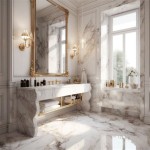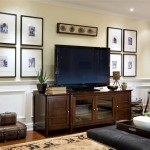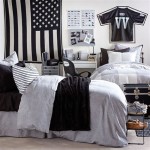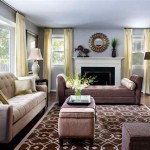Easy Home Decorating Tips for a Stylish and Comfortable Living Space
Home decorating can seem like a daunting task, often associated with expensive renovations and professional interior designers. However, creating a stylish and comfortable living space doesn't necessarily require a large budget or extensive expertise. Simple, strategic changes can dramatically improve a home's aesthetic appeal and functionality, reflecting personal style and enhancing daily life. This article presents a collection of easy home decorating tips, focusing on accessible and practical approaches to transform any space into a welcoming and personalized environment.
Decluttering and Organization: The Foundation of Good Decor
Before embarking on any decorating project, it's essential to address the existing clutter. Clutter can visually overwhelm a space, making it appear smaller and less inviting. A thorough decluttering process not only creates physical space but also provides a clean canvas for decorating. The key is to evaluate possessions objectively and eliminate items that are no longer needed, used, or loved.
Begin by sorting belongings into categories: items to keep, donate, sell, or discard. Be ruthless in assessing each item's value and functionality. Ask questions such as: "Have I used this in the past year?" or "Does this item bring me joy?" If the answer to both is no, it's likely time to let it go. Once the decluttering process is complete, focus on organizing the remaining items. Invest in storage solutions such as shelves, baskets, and containers to keep belongings neatly organized and easily accessible. Utilizing vertical space with shelving units maximizes storage in smaller rooms.
Organization extends beyond physical possessions. Consider the layout of furniture and ensure that it facilitates traffic flow and creates a sense of order. Arrange furniture in a way that encourages conversation and relaxation. Avoid overcrowding furniture in a room, as this can create a cramped and claustrophobic feeling. Clear surfaces such as countertops and tables as much as possible to create a sense of calm and spaciousness. A well-organized home not only looks better but also contributes to a more peaceful and functional living environment.
Strategic Use of Color and Lighting
Color and lighting are powerful tools in home decorating. They can significantly impact the mood and atmosphere of a room. Choosing the right color palette and lighting scheme can transform a space, making it feel brighter, warmer, or more spacious.
When selecting colors, consider the room's purpose and the desired mood. Lighter colors, such as white, beige, and pale gray, can make a room feel larger and more airy. These colors reflect light and create a sense of openness. Darker colors, such as navy blue, deep green, and charcoal gray, can create a more intimate and cozy atmosphere. These colors absorb light and make a room feel warmer. It's best to avoid using too many dark colors in small rooms, as this can make them feel even smaller. Consider incorporating bright accent colors through accessories such as pillows, throws, and artwork, to add pops of visual interest without overwhelming the space. Testing paint colors in the room is crucial before committing to a full paint job. Colors can appear differently under varying lighting conditions.
Lighting plays a crucial role in setting the ambiance of a room. A well-lit room feels more inviting and comfortable. Incorporate a combination of light sources, including ambient, task, and accent lighting. Ambient lighting provides overall illumination to the room. Task lighting provides focused light for specific activities, such as reading or cooking. Accent lighting highlights specific features, such as artwork or architectural details. Layering lighting creates depth and visual interest. Consider using dimmer switches to adjust the brightness of lights, allowing for greater control over the mood of the room. Natural light is also a valuable asset. Maximize natural light by keeping windows clean and unobstructed. Use sheer curtains or blinds to filter natural light while maintaining privacy. Mirrors can also be used to reflect light and brighten a room.
Adding Personality Through Accessories and Art
Accessories and art are essential for adding personality and character to a home. They provide opportunities to express individual style and create a space that reflects personal tastes and interests. Accessories can include items such as pillows, throws, rugs, vases, candles, and decorative objects; the key is to choose items that complement the overall design aesthetic and add texture, color, and visual interest.
When selecting accessories, consider the size and scale of the room. Avoid overcrowding a small room with too many accessories. Instead, focus on a few carefully chosen pieces that make a statement. Grouping accessories together in vignettes can create a more visually appealing display. Experiment with different arrangements to find what works best. Adding texture through accessories can create a more inviting and comfortable space. Incorporate items made from natural materials, such as wood, cotton, and linen. Plants are a great way to add life and color to a room. They also help to purify the air. Choose plants that are appropriate for the lighting conditions in the room. Proper plant care is important to keep plants healthy.
Artwork is a powerful way to express personal style and enhance the aesthetic appeal of a home. Choose artwork that resonates with personal taste and complements the overall design scheme. Consider the size and scale of the artwork in relation to the wall space. A large piece of art can make a statement in a small room, while a collection of smaller pieces can create a gallery wall. Experiment with different framing options to enhance the artwork's presentation. Hanging artwork at eye level ensures that it is viewed at the optimal height. Incorporate personal photographs to add a sentimental touch to the decor. Frame photographs in a variety of styles and sizes to create a visually interesting display. When hanging multiple picture frames, using the same color scheme to the frames will make the wall more aesthetically pleasing.
Repurposing and DIY Projects
Home decorating doesn't always require purchasing new items. Repurposing existing items and undertaking DIY projects can be a cost-effective and creative way to transform a space. Repurposing involves giving new life to old or unused items. For example, an old ladder can be transformed into a bookshelf or a vintage suitcase can be used as a side table. DIY projects provide an opportunity to customize decor and create unique pieces that reflect personal style.
Numerous online resources and tutorials offer inspiration and guidance for DIY projects. Simple projects, such as painting furniture, creating a gallery wall, or sewing new pillow covers, can make a big impact on a room's aesthetic. Consider using reclaimed materials for DIY projects. Reclaimed wood can be used to create shelving, tables, or headboards. Upcycling is also a great way to repurpose old items. An old jar, for example, can be turned into a decorative vase, or old shirts can be turned into a colorful quilt. Repurposing and DIY projects not only save money but also reduce waste and promote sustainability. The key is to be creative and resourceful. Look at everyday objects in a new light and consider how they can be transformed into something beautiful and functional.
Updating Hardware and Fixtures
Small details can make a big difference in home decorating. Updating hardware and fixtures is a simple and relatively inexpensive way to refresh a room's appearance. Hardware includes items such as door knobs, cabinet pulls, and light switch plates. Fixtures include items such as faucets, light fixtures, and ceiling fans. Replacing outdated or worn hardware and fixtures can instantly elevate a room's style.
When selecting new hardware, consider the overall design aesthetic of the room. Choose hardware that complements the existing style and color scheme. For example, brushed nickel or stainless steel hardware can add a modern touch to a kitchen or bathroom. Antique brass or oil-rubbed bronze hardware can add a vintage or rustic feel. Consider the functionality of the hardware as well. Choose door knobs and cabinet pulls that are comfortable to grip and easy to use. Replacing light fixtures is another effective way to update a room. Choose light fixtures that provide adequate illumination and complement the room's style. A new chandelier can make a statement in a dining room or entryway, while recessed lighting can provide a clean and modern look to a kitchen or bathroom. Updating faucets and other fixtures can also enhance a room's aesthetic. Choose fixtures that are durable, functional, and stylish. When replacing hardware and fixtures, be sure to turn off the power or water supply before starting the project. Follow the manufacturer's instructions carefully and use the appropriate tools. If you are unsure about any aspect of the project, consult a professional.

60 Easy And Chic Home Decor Ideas To Try From Designers

36 Diy Home Decor Projects Easy Craft Ideas For Decorating

5 Easter Decor Ideas To Light Up Your Home Designcafe

30 And Easy Home Decor S Are Borderline Genius Woohome

Styling Made Easy Home Decor Tips Dixie Belle Paint Company

Budget Friendly Decorating Ideas 6 Easy Tips The Design Twins

Decorate With Me Styling New Home Decor Decorating Tips Easy Ideas

Easy Colorful Decorating Idea Stonegable

Designing And Decorating A Room On Budget Designcafe

120 And Easy Diy Rustic Home Decor Ideas Tips
Related Posts







